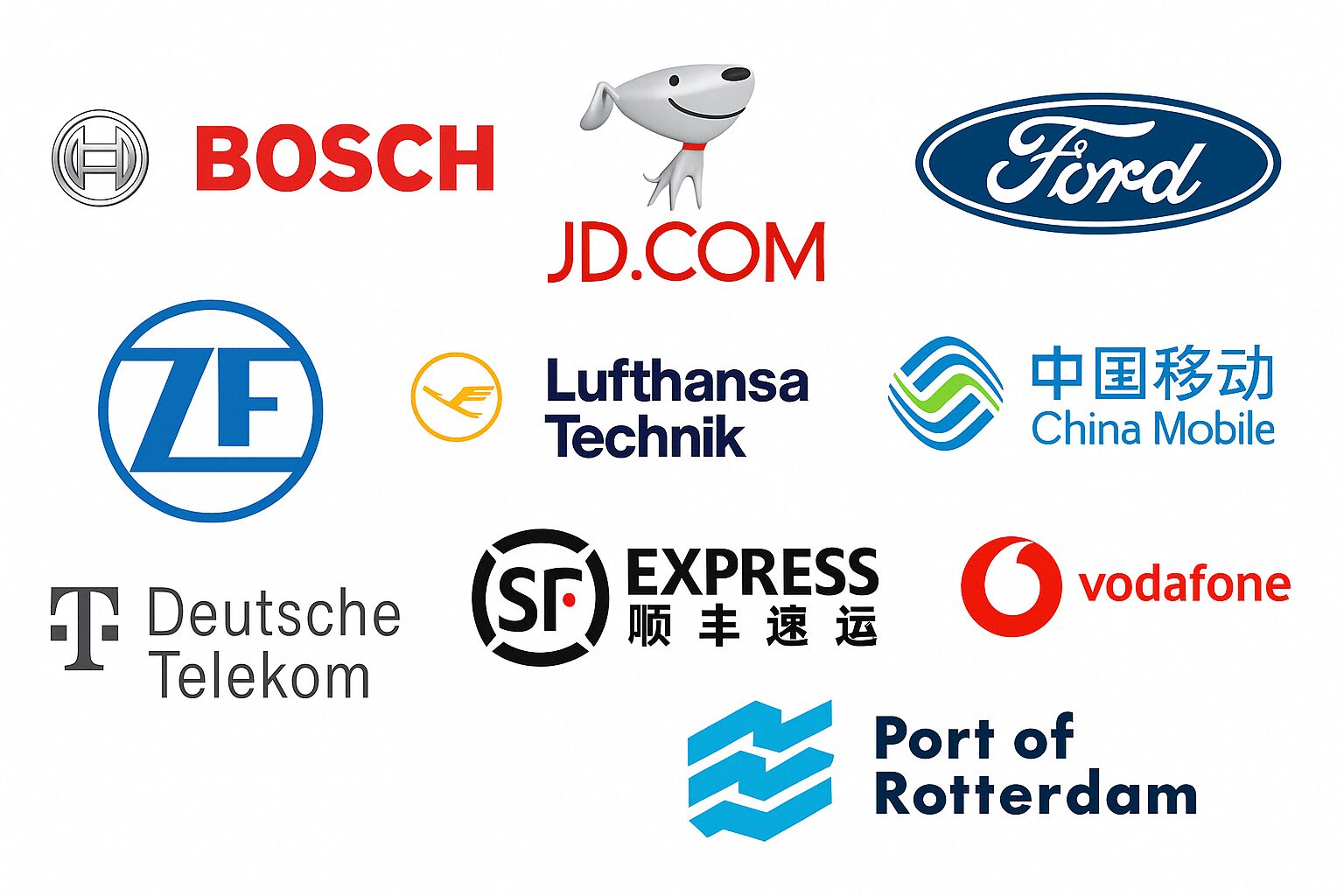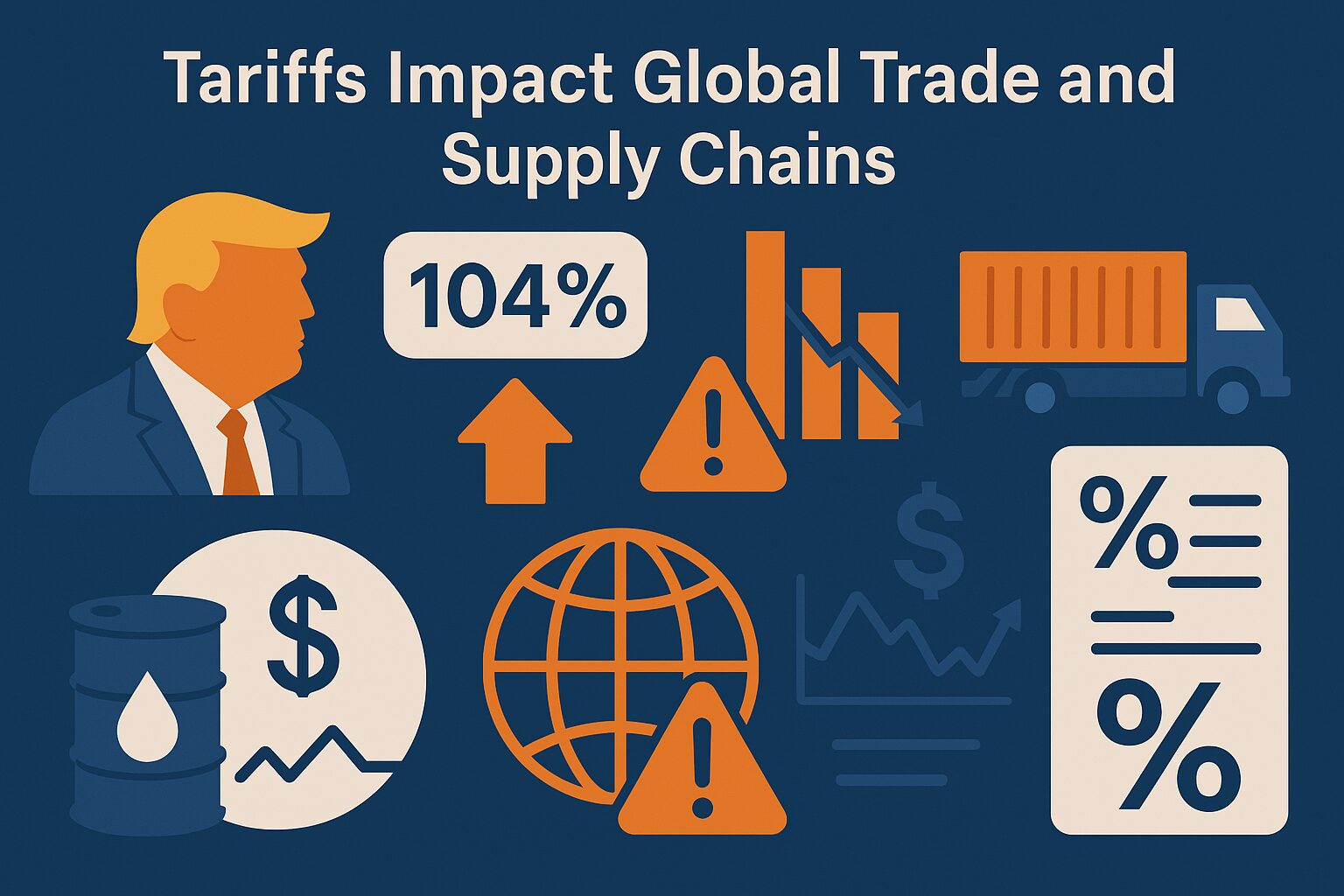How Bosch, JD.com, and Ford Are Using 5G to Transform Supply Chains
5G networks significantly improve data transmission speed, latency, and device connectivity, revolutionizing supply chain operations. These advancements enable real-time tracking and monitoring, enhance automated systems, and support a larger number of connected devices. The low latency of 5G allows for immediate response to any issues, ensuring smooth and efficient operations. Additionally, the high device connectivity […] The post How Bosch, JD.com, and Ford Are Using 5G to Transform Supply Chains appeared first on Logistics Viewpoints.


 5G networks significantly improve data transmission speed, latency, and device connectivity, revolutionizing supply chain operations. These advancements enable real-time tracking and monitoring, enhance automated systems, and support a larger number of connected devices. The low latency of 5G allows for immediate response to any issues, ensuring smooth and efficient operations. Additionally, the high device connectivity supports better coordination and efficiency in supply chain processes. Implementing 5G requires careful planning and investment, as it involves upgrading existing systems and ensuring compatibility with new technologies. However, the long-term benefits of adopting 5G include increased visibility, reduced delays, and improved operational efficiency, making it a worthwhile investment for the future of supply chain management.
5G networks significantly improve data transmission speed, latency, and device connectivity, revolutionizing supply chain operations. These advancements enable real-time tracking and monitoring, enhance automated systems, and support a larger number of connected devices. The low latency of 5G allows for immediate response to any issues, ensuring smooth and efficient operations. Additionally, the high device connectivity supports better coordination and efficiency in supply chain processes. Implementing 5G requires careful planning and investment, as it involves upgrading existing systems and ensuring compatibility with new technologies. However, the long-term benefits of adopting 5G include increased visibility, reduced delays, and improved operational efficiency, making it a worthwhile investment for the future of supply chain management.
Next let’s look at technical capabilities and applications in the domain.
Technical Capabilities of 5G
- Lower latency: Near-instantaneous communication (less than 1 millisecond)
- Higher throughput: Faster transmission of large data volumes
- Greater device density: Connectivity for a massive number of sensors and smart devices
Real-Time Visibility and Inventory Tracking
Traditional inventory systems rely on interval-based scanning and status updates. With 5G-enabled IoT sensors, businesses can receive continuous updates on the condition, location, and movement of goods. Lufthansa Technik uses 5G for virtual inspections of aircraft parts. This setup allows teams to collaborate in real time, sharing video and diagnostic data across geographies. It eliminates the need for physical travel by inspectors, improving maintenance turnaround times. The use of 5G also reduces aircraft ground time, contributing to better fleet utilization and resource scheduling.
Automation and Autonomous Systems
Autonomous vehicles, mobile robots, and drones require ultra-low latency communications to operate safely and in sync with dynamic environments. ZF Friedrichshafen has deployed a private 5G network at one of its test facilities to support the development and testing of autonomous vehicle systems. This network enables vehicles to share sensor data in real time, respond to dynamic obstacles, and interact with each other and roadside infrastructure. Engineers can collect and analyze telemetry without relying on the cloud, increasing security and speed. The project demonstrates how 5G networks can serve as the digital nervous system for autonomous logistics. It lays the foundation for safer and more scalable automation in supply chains.
Predictive Maintenance and Equipment Monitoring
Predictive maintenance requires constant equipment monitoring to detect wear and anomalies. Bosch uses 5G to connect production equipment in its smart factories, allowing for real-time data streaming and analysis. By analyzing vibration, temperature, and usage patterns, the system can detect early signs of failure before downtime occurs. Maintenance is then scheduled proactively, reducing disruption to operations and minimizing cost. The real-time aspect of 5G allows immediate alerts to technicians, even across multiple sites. Bosch’s implementation shows how industrial networks benefit from resilient, low-latency connectivity that enhances both performance and safety.
Fleet Coordination and Route Optimization
Efficient fleet operations depend on accurate, real-time information. JD.com launched a 5G-powered logistics park in Beijing to support connected delivery fleets and smart loading systems. Vehicles receive real-time routing instructions based on traffic, order volumes, and docking schedules. The system minimizes idling and waiting times, reducing emissions and fuel consumption. In the warehouse, robots and human workers collaborate through synchronized networks that eliminate latency. JD’s use of 5G results in faster deliveries, higher throughput, and a scalable logistics model that responds dynamically to demand.
Warehouse Efficiency and Workforce Tools
Warehouses today are complex environments filled with mobile devices, automated systems, and data-intensive workflows. Ford Motor Company has deployed a private 5G network at its UK facility to support robotic welding operations and smart tools. The 5G network ensures continuous data flow between machines and control systems, improving precision and reducing cycle variability. Wearables and tablets used by staff are also connected, allowing real-time adjustments and diagnostics. The system enhances safety and supports predictive maintenance by analyzing performance trends across operations. Ford’s example highlights how 5G helps bridge the physical and digital worlds in manufacturing settings.
Blockchain and Smart Contract Execution
5G can enhance the effectiveness of blockchain systems by allowing data from physical shipments to be transmitted and verified in real time. The Port of Rotterdam has launched pilot projects combining 5G with blockchain to streamline customs inspections, container tracking, and condition monitoring. Sensors placed in containers continuously transmit location, temperature, and humidity data. Smart contracts can be triggered based on this live data—such as when a shipment arrives or when certain conditions are met. This reduces paperwork, increases transparency, and accelerates transaction processing. Rotterdam’s initiative shows the potential for data-rich, trust-based logistics ecosystems supported by fast and secure wireless infrastructure.
5G Smart Logistics Park: China Mobile and SF Express
China Mobile and SF Express collaborated to launch a 5G-enabled smart logistics park designed to streamline delivery operations. This park integrates AI-powered fleet dispatch, real-time package tracking, and automated warehouse coordination across a private 5G network. Vehicles and warehouse systems communicate instantly, allowing for intelligent load planning and dynamic route adjustments. The project demonstrates how 5G can eliminate inefficiencies caused by delays, miscommunication, and manual routing in logistics operations. Initial results included reduced fuel consumption, faster loading times, and more consistent on-time delivery performance.
Implementation Considerations
Deploying 5G in supply chain operations involves more than upgrading a network. It includes infrastructure investments in antennas, sensors, and software. Organizations must ensure cybersecurity as more devices are connected and exposed to external data exchanges. Integration with ERP, WMS, and TMS systems is required to realize the full benefits of 5G. Companies are advised to start with pilot programs targeting high-impact areas before scaling network-wide, focusing on use cases that offer clear ROI.
5G is already delivering benefits in pilot deployments across ports, warehouses, and smart factories. Its ability to support live data, autonomous systems, and connected assets is becoming a foundational enabler of next-generation supply chains. Companies using 5G can expect faster decisions, lower emissions, and enhanced resilience. Over time, 5G will shift from an emerging technology to a standard utility that supports agile, intelligent supply chain ecosystems. Those who invest early may benefit from faster feedback loops, deeper insights, and stronger competitive positioning.
The post How Bosch, JD.com, and Ford Are Using 5G to Transform Supply Chains appeared first on Logistics Viewpoints.










































































































































































